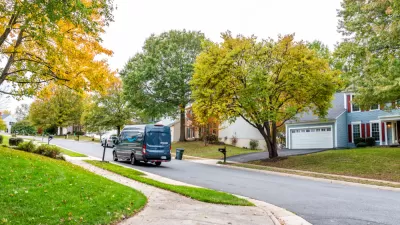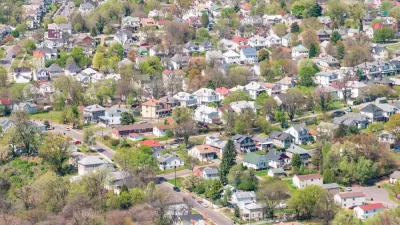News broke yesterday that the dormant SB 50, a bill proposed last year by California State Senator Scott Weiner, has new life in the new year.

"For the third year in a row, California lawmakers will consider a controversial housing proposal that would force neighborhoods to allow taller, denser housing near public transportation and job centers," reports Matt Levin.
In terms of chronology, Levin is referring to SB 827, the bill that died in 2018, and SB 50, a bill that almost died in 2019. SB 50, including new amendments, is moving forward again to kick off the legislative session in California.
"San Francisco Democratic Sen. Scott Wiener — whose Senate Bill 50 has twice been beaten back, in different forms, by an assortment of constituencies focused on California’s housing crisis — on Monday announced revised legislation aimed at satisfying concerns over local control, among other issues, that blocked the bill last year," explains Levin.
After the announcement, Wiener took to the Internet to post an explanation of new amendments and the ongoing effort to build political support for the bill.
Among the open questions about the bill posed by Levin is whether the changes of the bill will be enough to win the support of local control advocates.
As for what changed and what stayed the same in the plan in 2020, Levin lists these broad categories with more details included in the article:
- Cities would be allowed to craft their own housing plans, but the state "would wield a big stick against those that don't comply."
- Single-family zoning would still be eliminated for the vast majority of the state.
- The support of Governor Gavin Newsom is still undetermined, though the bill will likely require the governor's support to make it through to approval.
FULL STORY: Last year’s hottest housing fight just got resurrected — here’s what to know

Study: Maui’s Plan to Convert Vacation Rentals to Long-Term Housing Could Cause Nearly $1 Billion Economic Loss
The plan would reduce visitor accommodation by 25,% resulting in 1,900 jobs lost.

North Texas Transit Leaders Tout Benefits of TOD for Growing Region
At a summit focused on transit-oriented development, policymakers discussed how North Texas’ expanded light rail system can serve as a tool for economic growth.

Why Should We Subsidize Public Transportation?
Many public transit agencies face financial stress due to rising costs, declining fare revenue, and declining subsidies. Transit advocates must provide a strong business case for increasing public transit funding.

How to Make US Trains Faster
Changes to boarding platforms and a switch to electric trains could improve U.S. passenger rail service without the added cost of high-speed rail.

Columbia’s Revitalized ‘Loop’ Is a Hub for Local Entrepreneurs
A focus on small businesses is helping a commercial corridor in Columbia, Missouri thrive.

Invasive Insect Threatens Minnesota’s Ash Forests
The Emerald Ash Borer is a rapidly spreading invasive pest threatening Minnesota’s ash trees, and homeowners are encouraged to plant diverse replacement species, avoid moving ash firewood, and monitor for signs of infestation.
Urban Design for Planners 1: Software Tools
This six-course series explores essential urban design concepts using open source software and equips planners with the tools they need to participate fully in the urban design process.
Planning for Universal Design
Learn the tools for implementing Universal Design in planning regulations.
Ascent Environmental
Borough of Carlisle
Institute for Housing and Urban Development Studies (IHS)
City of Grandview
Harvard GSD Executive Education
Toledo-Lucas County Plan Commissions
Salt Lake City
NYU Wagner Graduate School of Public Service





























